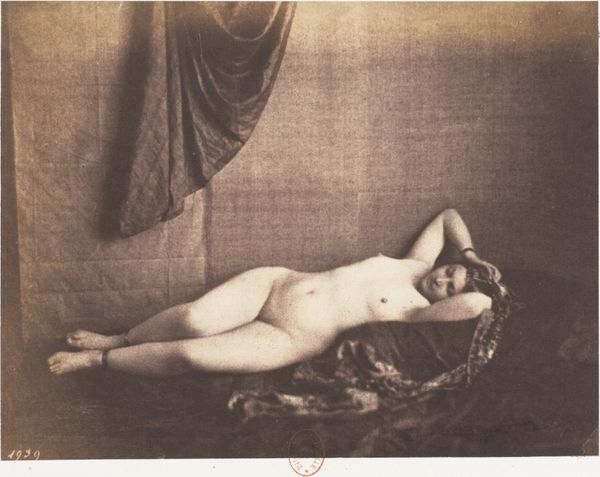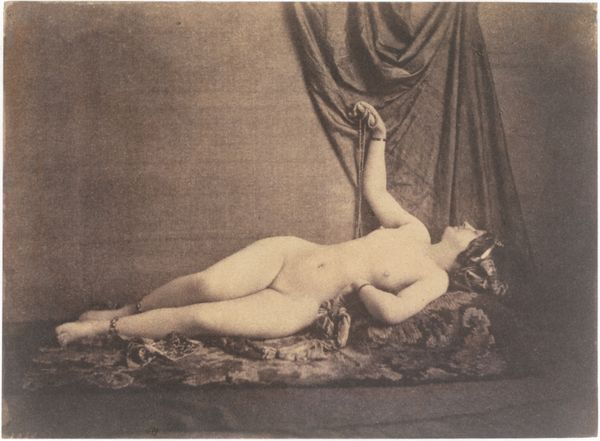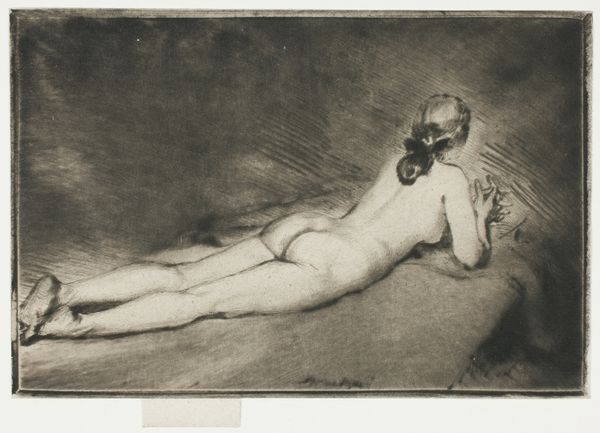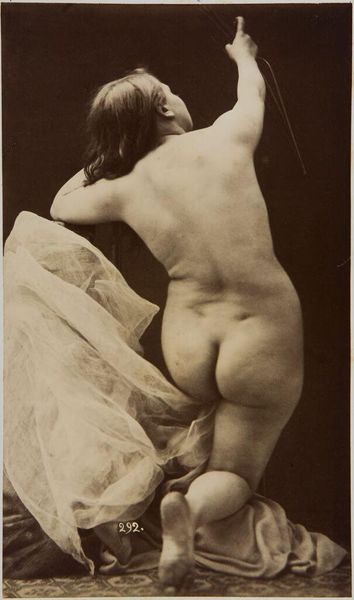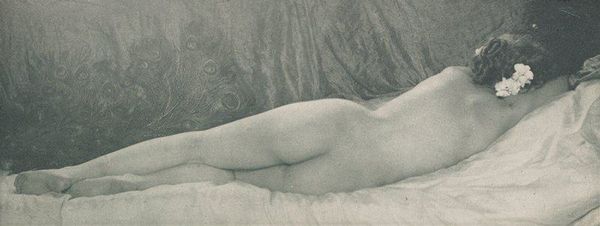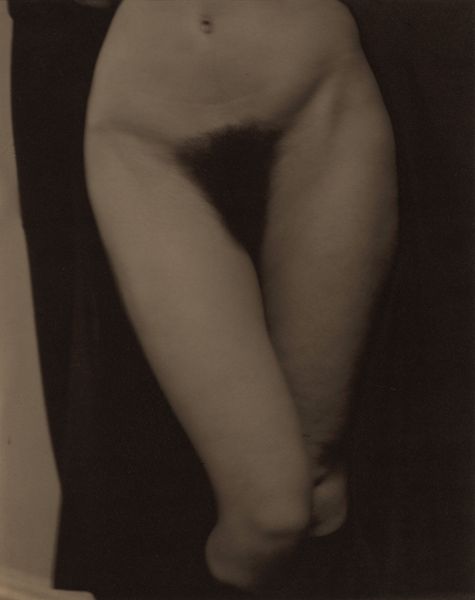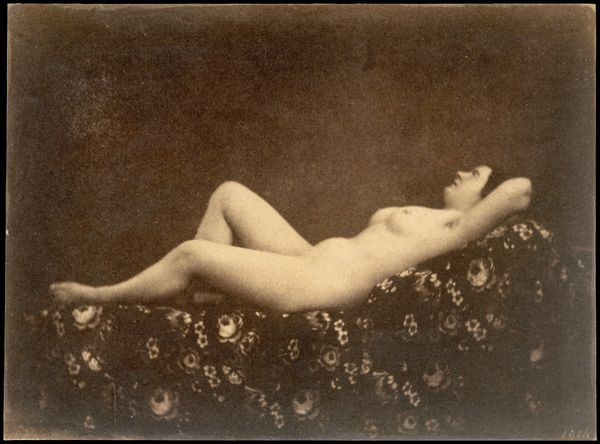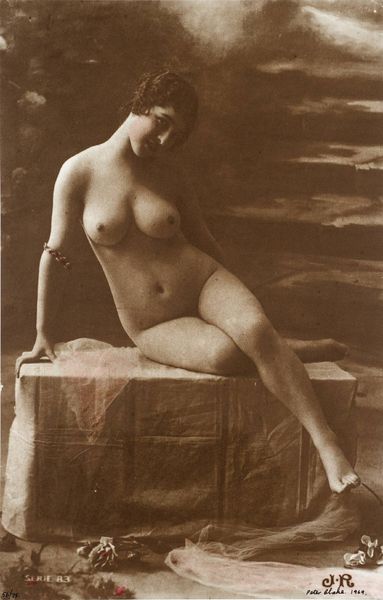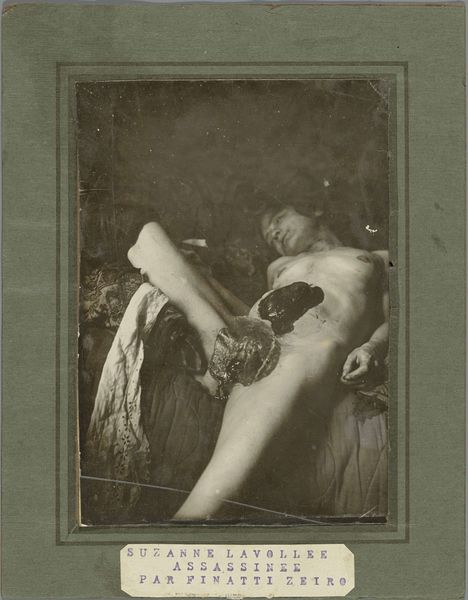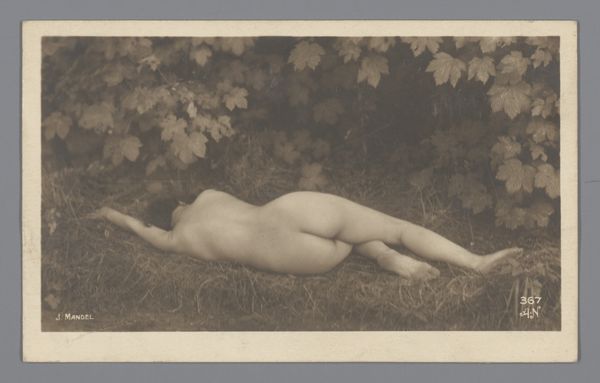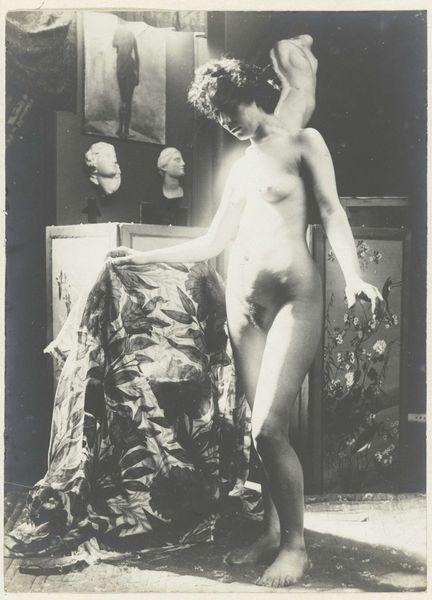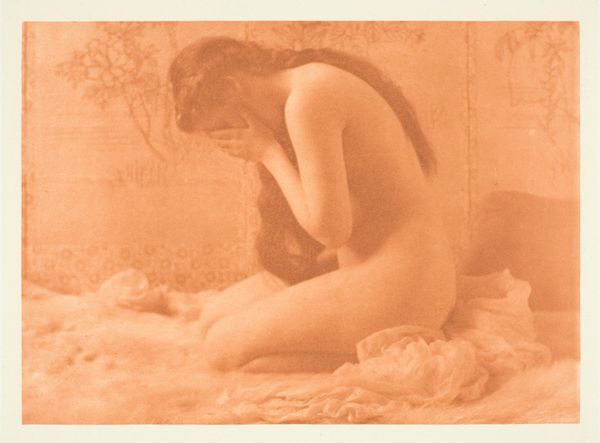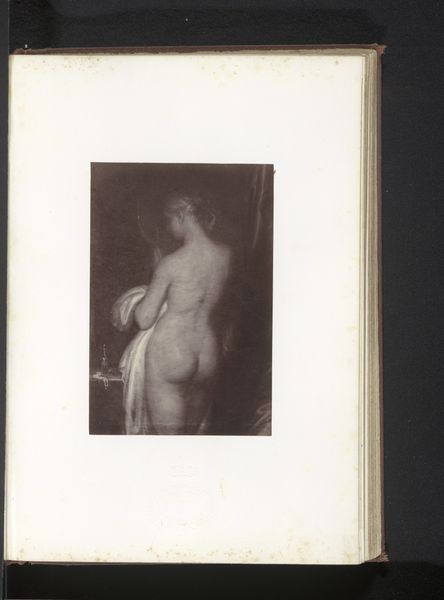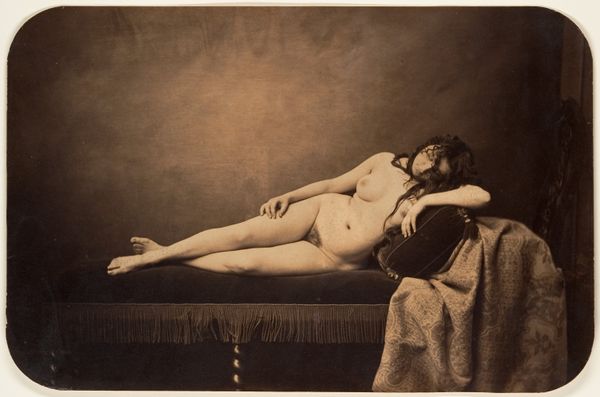![[Female Nude from the Back] by Thomas Eakins](/_next/image?url=https%3A%2F%2Fd2w8kbdekdi1gv.cloudfront.net%2FeyJidWNrZXQiOiAiYXJ0ZXJhLWltYWdlcy1idWNrZXQiLCAia2V5IjogImFydHdvcmtzLzVmMDc4N2RmLWI2MTAtNGMyYy1hODUxLWU3ZmI3YWU1YTc4YS81ZjA3ODdkZi1iNjEwLTRjMmMtYTg1MS1lN2ZiN2FlNWE3OGFfZnVsbC5qcGciLCAiZWRpdHMiOiB7InJlc2l6ZSI6IHsid2lkdGgiOiAxOTIwLCAiaGVpZ2h0IjogMTkyMCwgImZpdCI6ICJpbnNpZGUifX19&w=3840&q=75)
photography, gelatin-silver-print
#
print photography
#
black and white photography
#
photography
#
female-nude
#
gelatin-silver-print
#
monochrome photography
#
nude
#
realism
Dimensions: 7.1 x 13.4 cm (2 13/16 x 5 1/4 in.)
Copyright: Public Domain
Editor: So, this gelatin-silver print from around 1887-1891, "[Female Nude from the Back]" by Thomas Eakins. It's… striking. It feels so matter-of-fact, almost scientific. There’s a strong emphasis on the realism, the form… But why a photograph instead of a painting? How does that shift the interpretation of the nude? Curator: Excellent question. Photography offered Eakins, and the Realist movement in general, a new tool to represent the world with what appeared to be unmediated accuracy. Think about the academic art world at the time – highly structured, with its own power dynamics. Eakins photographing nudes challenged those norms, presenting the human body in a less idealized, perhaps more democratic way. Do you notice anything else about the space, beyond the figure herself? Editor: There’s a vague figure in the background, some dark paneling. The studio setting feels deliberate, less like a sensual boudoir, more like a laboratory. Was this a rejection of classical depictions of the female nude? Curator: Precisely. It was, in many ways, a move to democratize art by injecting a dose of reality and science into the long-held tradition of academic painting. This shift can also be interpreted through lens of power: who gets to represent the nude and for what purpose? Was Eakins empowering or exploiting his models by emphasizing realism? Consider, also, the public reaction; how did his choice of medium impact the reception of his art? Editor: So the choice of photography and realism can be interpreted as both an artistic statement and a socio-political one, impacting his own career and the broader reception of art. Thank you; that makes a lot of sense. Curator: Exactly. Considering the social context illuminates the multifaceted layers inherent in such works.
Comments
No comments
Be the first to comment and join the conversation on the ultimate creative platform.
